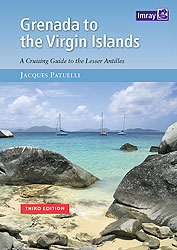| |
|

 Discovered during Columbus’ fourth voyage in 1502, like Martinique. Until the mid 17th century the Caribs remained masters of the island, resisting every attempt at colonisation. After massacring an English colony in 1639, they finally accepted a treaty with the French in 1660. From around that time conflict between the French and English was incessant and St Lucia changed hands more than fourteen times. Its history was often tied to that of Martinique. St Lucia became French for the last time in 1802 following the Treaty of Amiens. After the Napoleonic Wars in 1814, it became definitively British. Nonetheless, like Dominica the island retained the imprint of the old French presence in many of its place names and in its patois, which is very like creole. Discovered during Columbus’ fourth voyage in 1502, like Martinique. Until the mid 17th century the Caribs remained masters of the island, resisting every attempt at colonisation. After massacring an English colony in 1639, they finally accepted a treaty with the French in 1660. From around that time conflict between the French and English was incessant and St Lucia changed hands more than fourteen times. Its history was often tied to that of Martinique. St Lucia became French for the last time in 1802 following the Treaty of Amiens. After the Napoleonic Wars in 1814, it became definitively British. Nonetheless, like Dominica the island retained the imprint of the old French presence in many of its place names and in its patois, which is very like creole.
|
|
|
|
After the long period of colonial rule marked by the steady decline in the fortunes of its agriculture following the abolition of slavery, St Lucia became an associated state of the Commonwealth in 1967 and independent on 22 February 1979. The population is predominantly of African origin with some racial intermixing.
 Agriculture continues to be the island’s economic mainstay despite minor attempts at industrialisation and the oil terminal at Grand Cul-de-Sac. Growing sugar cane has largely been replaced by growing bananas, cocoa, coconuts and citrus fruit. Thanks to the exploitation of the island’s natural beauty, continuous expansion of the hotelindustry and an international airport, tourism has been expanding rapidly for some years. For all that, the purchasing power of the population remains below that of neighbouring Martinique. Agriculture continues to be the island’s economic mainstay despite minor attempts at industrialisation and the oil terminal at Grand Cul-de-Sac. Growing sugar cane has largely been replaced by growing bananas, cocoa, coconuts and citrus fruit. Thanks to the exploitation of the island’s natural beauty, continuous expansion of the hotelindustry and an international airport, tourism has been expanding rapidly for some years. For all that, the purchasing power of the population remains below that of neighbouring Martinique.
|
|
|








